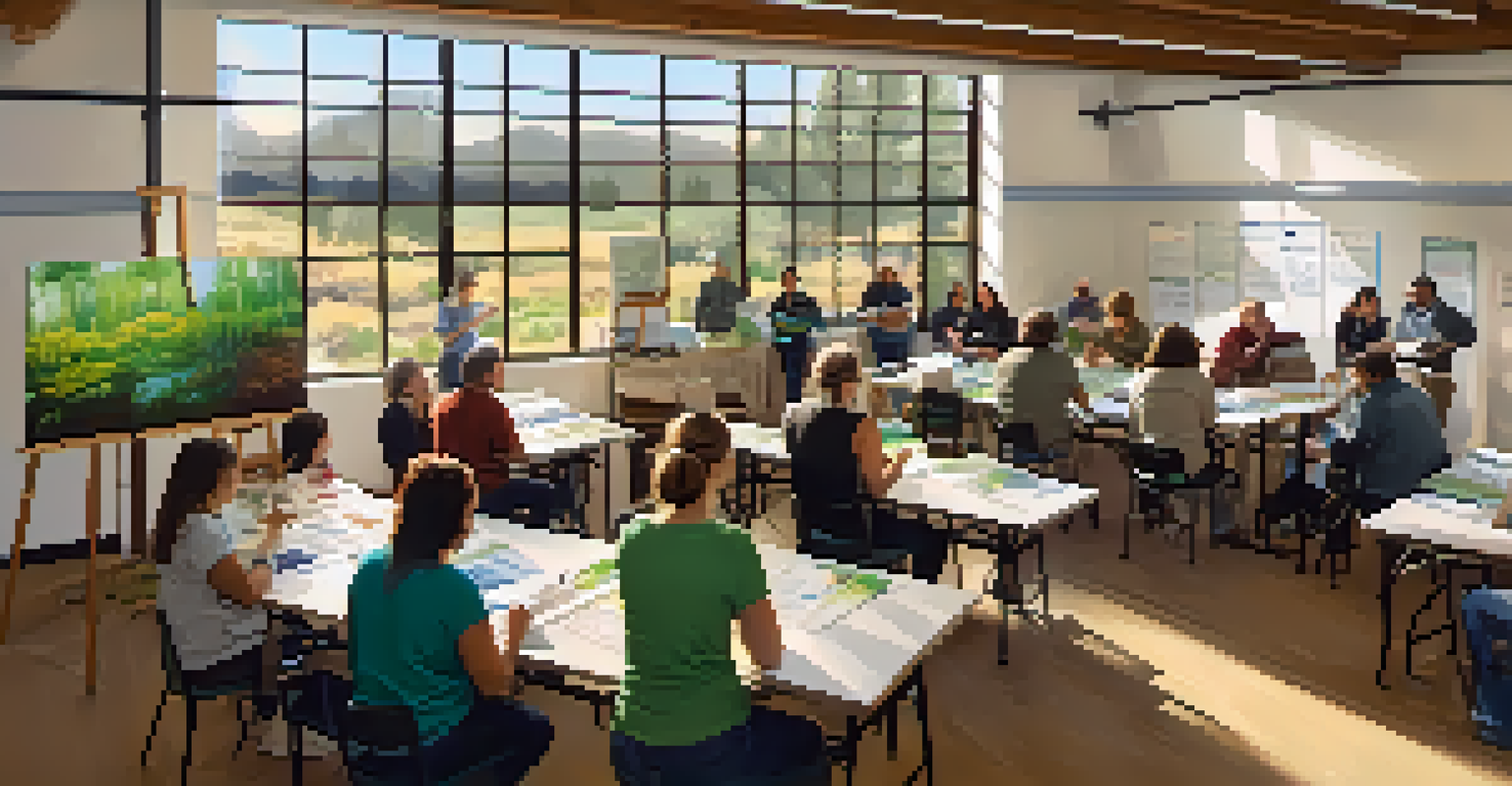The Role of Citizen Scientists in Colorado's Conservation Efforts

Understanding Citizen Science in Conservation
Citizen science involves the public in scientific research, helping to gather data that can be critical for conservation efforts. In Colorado, this movement has gained momentum, empowering residents to contribute to various environmental projects. By participating, citizens become more engaged with their local ecosystems, fostering a sense of stewardship and responsibility.
We won't have a society if we destroy the environment.
This collaboration between scientists and the public creates a unique blend of expertise and local knowledge. For instance, hikers can report sightings of rare species or document changes in plant life, contributing valuable information to research initiatives. As a result, citizen scientists play a crucial role in bridging the gap between professional researchers and the community.
Moreover, citizen science projects often provide training and resources for participants, enabling them to develop skills in data collection and analysis. This hands-on experience not only benefits the environment but also enriches the lives of those involved, making science accessible and enjoyable.
The Impact of Citizen Science on Biodiversity Monitoring
One of the most significant contributions of citizen scientists in Colorado is biodiversity monitoring. Volunteers help track populations of various species, providing insights into their health and distribution. This data is essential for identifying trends and making informed decisions regarding conservation strategies.

For example, initiatives like the Colorado Butterfly Monitoring Network rely on citizen observations to understand butterfly populations over time. These findings can indicate broader environmental changes, such as shifts in climate or habitat loss. In this way, citizen scientists help paint a clearer picture of Colorado's ecological landscape.
Citizen Science Empowers Communities
Citizen science initiatives in Colorado actively engage residents, fostering a sense of stewardship and responsibility towards local ecosystems.
Additionally, the involvement of local communities in monitoring efforts fosters a greater appreciation for biodiversity. Participants often develop a deeper connection to their environment, leading to more active advocacy for conservation measures. This grassroots engagement is vital for sustaining long-term conservation initiatives.
Engaging Communities Through Citizen Science Programs
Citizen science programs in Colorado are designed to engage communities and inspire participation in conservation. Organizations often host workshops, training sessions, and field trips to educate citizens about local ecosystems and the importance of their contributions. These events not only build skills but also foster a sense of community among participants.
The greatest threat to our planet is the belief that someone else will save it.
For instance, the Rocky Mountain Bird Observatory encourages local bird enthusiasts to monitor avian populations through engaging programs. By providing the necessary training and tools, they empower individuals to take part in meaningful research, while also enjoying the beauty of Colorado's natural landscapes.
Such community engagement helps create a network of informed citizens who are passionate about conservation. When people feel connected to a cause, they are more likely to advocate for policies and practices that protect their local environments. This grassroots involvement is a powerful force for change.
Technology's Role in Citizen Science Initiatives
In our tech-driven world, technology plays a pivotal role in enhancing citizen science initiatives. Mobile apps and online platforms enable volunteers to easily collect and share data with researchers. For example, apps like iNaturalist allow users to document species and contribute to a global database of biodiversity.
These tools streamline the data collection process, making it more accessible for citizen scientists. With just a smartphone, individuals can engage in meaningful research while enjoying outdoor activities. This convenience encourages more people to participate, thus broadening the impact of conservation efforts.
Technology Enhances Data Collection
Advancements in technology, like mobile apps, streamline data collection for citizen scientists, making participation more accessible and impactful.
Moreover, technology facilitates communication and collaboration among citizen scientists and researchers. Online forums and social media groups foster a sense of community, allowing individuals to share experiences and learn from one another. This interconnectedness enhances the overall effectiveness of conservation initiatives.
Case Studies of Successful Citizen Science Projects
Several successful citizen science projects in Colorado highlight the effectiveness of community involvement in conservation. One notable example is the Colorado River Watch Program, where volunteers monitor water quality in rivers and streams. This data is critical for understanding the health of aquatic ecosystems and informing water management policies.
Another inspiring project is the Front Range Phenology Trail, which encourages participants to observe seasonal changes in plants and animals. By tracking these changes over time, citizen scientists contribute to valuable research on climate change and its impact on local ecosystems. This collaboration not only provides essential data but also fosters a sense of community among participants.
These case studies demonstrate that citizen scientists are not just contributors but vital partners in conservation. Their efforts lead to tangible outcomes that benefit both the environment and the community, showcasing the power of collective action.
Challenges Faced by Citizen Scientists
While citizen science offers numerous benefits, it also presents challenges that need to be addressed. One major hurdle is ensuring the accuracy and reliability of data collected by volunteers. To mitigate this, organizations must provide thorough training and ongoing support to participants, enabling them to understand best practices for data collection.
Additionally, engaging and retaining volunteers can be difficult. Many projects rely on the commitment of individuals over time, which can fluctuate. To maintain enthusiasm, organizations should regularly communicate the impact of citizen contributions and celebrate successes, keeping participants motivated and connected to the cause.
Community Involvement Drives Change
Successful citizen science projects demonstrate how community involvement leads to tangible conservation outcomes and a deeper connection to local environments.
Lastly, funding can also pose a challenge for citizen science initiatives. Many projects depend on grants and donations to operate, making it essential for organizations to develop sustainable funding strategies. By addressing these challenges, citizen science can continue to thrive and make a lasting impact on conservation efforts.
The Future of Citizen Science in Conservation
Looking ahead, the future of citizen science in Colorado's conservation efforts appears promising. As more individuals recognize the importance of their contributions, we can expect increased participation in various initiatives. This growing movement will likely lead to more comprehensive data collection and insights into local ecosystems.
Moreover, advancements in technology will continue to enhance citizen science projects. With improved tools for data collection and communication, volunteers will be better equipped to contribute meaningfully. This evolution will help bridge the gap between professional scientists and the public, fostering collaboration.

Ultimately, the continued success of citizen science depends on cultivating a culture of engagement and stewardship within communities. By encouraging individuals to take an active role in conservation, we can create a sustainable future for Colorado's rich natural resources. Together, we can ensure that every citizen's voice and effort count.